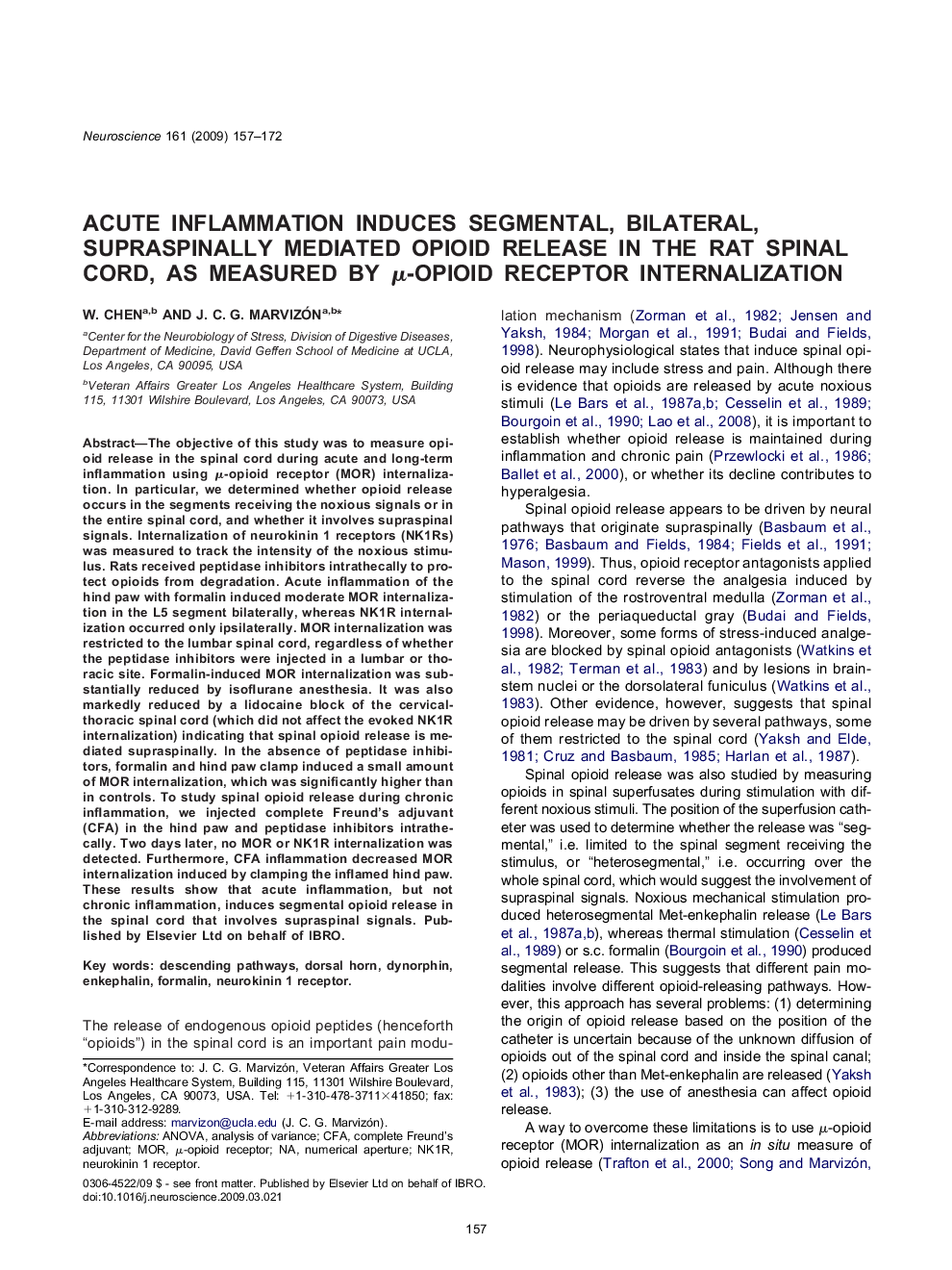| کد مقاله | کد نشریه | سال انتشار | مقاله انگلیسی | نسخه تمام متن |
|---|---|---|---|---|
| 4339910 | 1295773 | 2009 | 16 صفحه PDF | دانلود رایگان |

The objective of this study was to measure opioid release in the spinal cord during acute and long-term inflammation using μ-opioid receptor (MOR) internalization. In particular, we determined whether opioid release occurs in the segments receiving the noxious signals or in the entire spinal cord, and whether it involves supraspinal signals. Internalization of neurokinin 1 receptors (NK1Rs) was measured to track the intensity of the noxious stimulus. Rats received peptidase inhibitors intrathecally to protect opioids from degradation. Acute inflammation of the hind paw with formalin induced moderate MOR internalization in the L5 segment bilaterally, whereas NK1R internalization occurred only ipsilaterally. MOR internalization was restricted to the lumbar spinal cord, regardless of whether the peptidase inhibitors were injected in a lumbar or thoracic site. Formalin-induced MOR internalization was substantially reduced by isoflurane anesthesia. It was also markedly reduced by a lidocaine block of the cervical-thoracic spinal cord (which did not affect the evoked NK1R internalization) indicating that spinal opioid release is mediated supraspinally. In the absence of peptidase inhibitors, formalin and hind paw clamp induced a small amount of MOR internalization, which was significantly higher than in controls. To study spinal opioid release during chronic inflammation, we injected complete Freund's adjuvant (CFA) in the hind paw and peptidase inhibitors intrathecally. Two days later, no MOR or NK1R internalization was detected. Furthermore, CFA inflammation decreased MOR internalization induced by clamping the inflamed hind paw. These results show that acute inflammation, but not chronic inflammation, induces segmental opioid release in the spinal cord that involves supraspinal signals.
Journal: Neuroscience - Volume 161, Issue 1, 16 June 2009, Pages 157–172